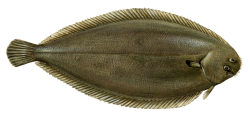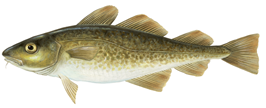The sustainable future of fisheries is a central goal of the Common Fisheries Policy. This is however challenged by the current overexploitation of European stocks, due to the high EU demand of fish and fish products.
Recently, the European Parliament suggested in a resolution that boosting aquaculture activity in Europe could help to meet the growing consumer demand [1]. It was however also stressed that a focus on sustainability should be applied along with safeguards to prevent environmental and public health risks, i.e. biosafety must be sustained. Similarly, opportunities and challenges arising from aquaculture in the European Union have been addressed in a Communication from the European Commission [2] and in the Green Paper on the CFP reform [3].
While genetic technology can strongly support aquaculture management and adequately address challenges arising from aquaculture, examples of genetic technology applications are sparse and do currently mainly involve salmonids [4]. For marine fish, the potential genetic impact of farmed fish on wild populations has been dealt with primarily on a theoretical level [5; 6].
The genetic assignment of fish to their farm of origin is key to resolving fundamental questions and challenges arising from aquaculture. It constitutes an asset to future traceability and (eco-) labelling schemes, as proposed by the Commission [3] and the European Parliament [2]. Moreover tracing back aquaculture escapees to the farm of origin is indispensable to evaluate the potential genetic impact of domestication of farmed aquatic species on wild populations, as well as for control purposes. Fish farming can also be used to release cultured juveniles for restocking of wild populations and sea ranching [7]. Assessing the success of such approaches also requires the ability to trace farm origin individuals back to the source.
By focusing on two marine fish species, of major commercial interest, common sole (Solea solea) and Atlantic cod (Gadus morhua), this study aims at building a basis for aquaculture management of marine fish based on genetic tools, including the monitoring and control of farm escapees, and fish farming for restocking purposes of wild populations.
This study:
- Evaluates the feasibility of distinguishing genetically between farmed and wild common sole and Atlantic cod;
- Evaluates the feasibility of genetically tracing individual fish back to a farmed origin, - ideally to the farm of origin -, in common sole and Atlantic cod;
- Develops appropriate identification methodologies, including a comparison of population assignment methods with parentage identification techniques, to provide the greatest power for correctly identifying farmed individuals;
- Develops traceability assays within a forensic framework (standard operating procedures) in order to ensure that the assays can be applied in a legal context;
- Examines the applicability of the approach to other marine aquaculture species, particularly farmed in the Mediterranean, e.g. European seabass (Dicentrarchus labrax) and gilthead seabream (Sparus aurata).
The outcomes are expected to support the enhancement of marine aquaculture under the Common Fisheries Policy remit.
| Image sources: Common sole and cod: © Scandinavian Fishing Yearbook |
References
[1] Guillot JD (2010) MEPs call for strong European aquaculture sector. European Parliament Press Release. Strasbourg: European Parliament. pp. 2.
[2] European Commission (2009) Communication from the commission to the European Parliament and the council: Building a sustainable future for aquaculture - A new impetus for the Strategy for the Sustainable Development of European Aquaculture. pp.13. Brussels, 8.4.2009; COM(2009) 162 final.
[3] European Commission (2009) Green Paper: Reform of the Common Fisheries Policy. COM(2009)163 final.
[4] E.g. Glover KA, Skilbrei OT, Skaala Ø (2008) Genetic assignment identifies farm of origin for Atlantic salmon Salmo salar escapees in a Norwegian fjord. ICES Journal of Marine Science 65: 912.
[5] Bekkevold D, Hansen MM, Nielsen EE (2006) Genetic impact of gadoid culture on wild fish populations: Predictions, lessons from salmonids, and possibilities for minimizing adverse effects. ICES Journal of Marine Science 63: 198.
[6] Svåsand T, Crosetti D, Eva-Garcia-Vázquez, Verspoor E, editors (2007) Genetic impact of aquaculture activities on native populations (Genimpact). Final Scientific Report. A European network (FP6): EU contract n. RICA-CT-2005-022802.
[7] Bell JD, Leber KM, Blankenship HL, Loneragan NR, Masuda R (2008) A new era for restocking, stock enhancement and sea ranching of coastal fisheries resources. Reviews in Fisheries Science 16: 1-9.



